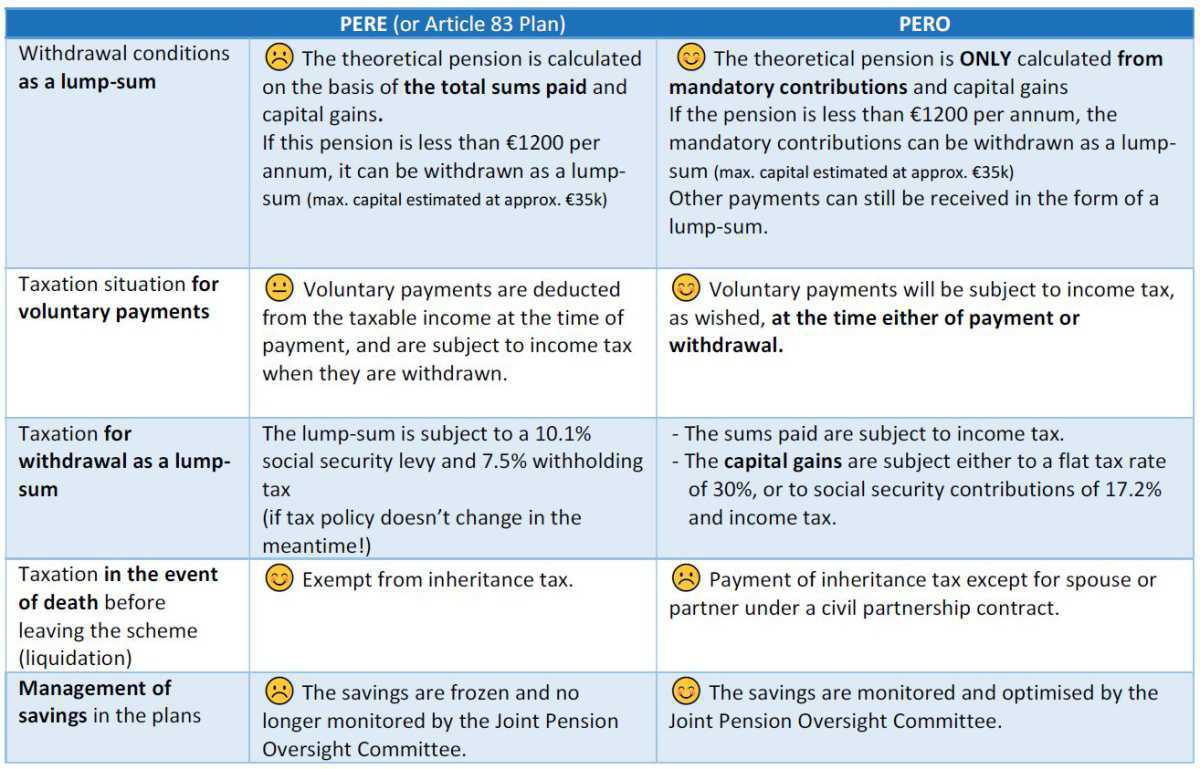At the start of 2022, the PERE (the Company Retirement Savings Plan or ''Article 83 '' Plan) was replaced by the PERO (Mandatory Retirement Savings Plan), in application of the PACTE law.
Lire en Francais
This scheme can receive monies from 3 sources (called ‘’sub-funds’’ by the BNP):
- Mandatory contributions by employees and employers (0.5% and 1.67% respectively of gross monthly pay).
- Individual payments (called ‘’employee savings’’ by the BNP) from, for example, the transfer of profit-sharing or incentive schemes, or monetisation of the time savings account (French acronym: CET) etc.
- Voluntary payments, whether regular or one-off, made by employees on the BNP’s company retirement savings platform (Personeo or Visiogo).
From the start of 2022, mandatory contributions or voluntary payments only go into the PERO.
Voluntary payments need to be changed in Personeo
Savings do not have to be transferred from your PERE to your PERO, the choice is yours.
The PERE and PERO differ in particular by their withdrawal conditions, taxation implications and the funds of which they are composed
Keeping your PERE or transferring it to your PERO depends on your personal situation and your choices regarding taxation, risk management and withdrawal option.
Main reasons for transferring your PERE to your PERO :
- I want a single clear view of my mandatory company retirement savings: so I am keeping just one plan
- I want to have the benefit of new funds offered in the PERO
- I prefer to take the money out in the form of a pension: Whether I wish to transfer or not depends mainly on my choice regarding inheritance tax, in case I die during the saving phase (see below).
Main reasons for keeping your PERE:
- I prefer to take out the money as a lump-sum and the amount in my PERE allows this (the pension calculated is less than €1200 per annum): transferring it to my PERO could prevent me from taking it out as a lump-sum if the total of mandatory contributions and interest up to the time I leave the company, is more than the maximum allowed for a lump-sum withdrawal
- I absolutely want to avoid any additional inheritance tax for my beneficiaries other than my spouse or partner under a civil partnership contract.
- I want to keep the tax on my lump-sum withdrawals as low as possible (subject to the tax regulations not changing before the withdrawal date)
Your savings in your PERE can be transferred to your PERO at any time.
In April 2022, the BNP will offer an “individual collective transfer”.
To request a transfer, download the form available on your private Personeo space, under the heading “My contract / Transfer a contract”, and send it in, duly completed, dated and signed
together with the documents requested.
This process can be accessed digitally or by post.
In April 2022 only, the BNP will offer an “individual collective transfer” allowing 2022 interest to be received for the ‘’CARDIF sécurité’’ fund.
Otherwise, you will be able to transfer your PERE to your PERO later, but the interest for the current year from the ‘’CARDIF sécurité’’ fund will not be taken into account.
Any transfer always covers all the savings and will be carried out free of charge.





